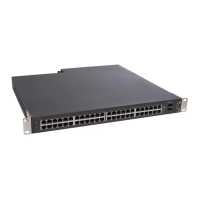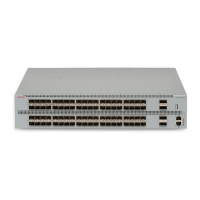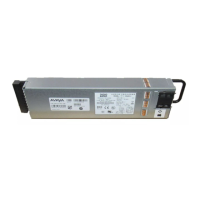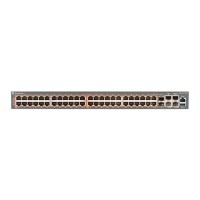• The Cascade Down LED for Unit 2 and the Cascade Up LED for Unit 4 turn amber to
indicate an error has been detected.
• The remaining stack units continue to be connected.
There are four internal ports for two Cascade links. Internal ports 1 and 2 are associated with
Cascade-Down link and internal ports 3 and 4 are associated with Cascade-Up link. When
viewing the event log after a stack port goes down, use the following information to help
determine the problem:
• Message Stack port 1 DOWN or Stack port 2 DOWN means Cascade-Down link is
down.
• Message Stack port 1 UP or Stack port 2 UP means Cascade-Down link is up.
• Message Stack port 3 DOWN or Stack port 4 DOWN means Cascade-Up link is down.
• Message Stack port 3 UP or Stack port 4 UP means Cascade-Up link is up.
Figure 5: Redundant stack configuration
For stack installation procedures, see
Stack configuration on page 67.
Identifying cables to use with the Ethernet Routing Switch
The following table lists the required cables for a 5000 Series switch and cable
specifications.
Table 2: Switch cabling requirements
Required cable Description
10/100/1GBase-T Ports The interconnect cabling must conform to the Cat5e, Cat6,
or Cat6e specification of the Commercial Building
Telecommunications Cabling Standard, ANSI/TIA/EIA 568-
B fitted with an RJ-45 Module Jack.
Placement options and cables
Installing Avaya Ethernet Routing Switch 5000 Series December 2013 23

